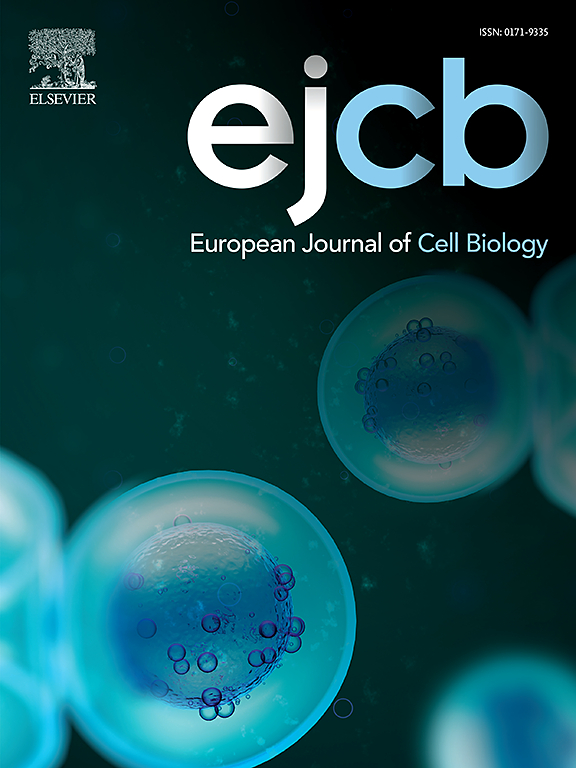iPSC screening identifies CACNA2D2 as a potential therapeutic target for FTLD-Tau
IF 4.3
3区 生物学
Q2 CELL BIOLOGY
引用次数: 0
Abstract
Frontotemporal Lobar Degeneration (FTLD) is a neurodegenerative disorder that affects the frontal and temporal lobes, which are crucial for regulating personality, behavior, and language. Pathologically, FTLD is characterized by Tau protein accumulation and neuronal death. In our effort to identify disease-modifying treatments, we conducted drug screening using neurons derived from induced pluripotent stem cells (iPSCs) of FTLD-Tau patients. This screening identified gabapentin as an existing drug that suppresses neuronal cell death with suppressed accumulation of Tau oligomers. Treatment with gabapentinoids, including pregabalin and mirogabalin, demonstrated similar neuroprotective effects. These compounds bind to the α2δ subunit of voltage-dependent calcium channels and specifically target the two isoforms α2δ-1 and α2δ-2. To determine which isoform is involved in the neurodegeneration seen in FTLD-Tau, we employed a knockout approach using iPSCs, which revealed that α2δ-2, encoded by CACNA2D2, plays a key role in the degeneration of FTLD-Tau neurons. Moreover, Neural organoids of FTLD-Tau exhibited features indicative of neurodegeneration, and CACNA2D2 knockout reversed a part of the gene expression alterations associated with these neurodegenerative features. These findings suggest that α2δ-2 may be a promising target for disease-modifying therapies in FTLD-Tau.
iPSC筛选发现CACNA2D2是FTLD-Tau的潜在治疗靶点
额颞叶变性(FTLD)是一种影响额叶和颞叶的神经退行性疾病,额叶和颞叶对调节人格、行为和语言至关重要。病理上,FTLD以Tau蛋白积累和神经元死亡为特征。在我们努力确定疾病改善治疗的过程中,我们使用来自FTLD-Tau患者的诱导多能干细胞(iPSCs)的神经元进行了药物筛选。该筛选确定加巴喷丁是一种现有的药物,通过抑制Tau寡聚物的积累来抑制神经元细胞死亡。加巴喷丁类药物治疗,包括普瑞巴林和米罗巴林,显示出类似的神经保护作用。这些化合物结合到电压依赖性钙通道的α2δ亚基上,并特异性靶向α2δ-1和α2δ-2两种亚型。为了确定哪种亚型参与FTLD-Tau的神经变性,我们使用iPSCs进行敲除,结果表明CACNA2D2编码的α2δ-2在FTLD-Tau神经元的变性中起关键作用。此外,FTLD-Tau的神经类器官表现出神经退行性特征,CACNA2D2敲除逆转了与这些神经退行性特征相关的部分基因表达改变。这些发现表明α2δ-2可能是FTLD-Tau疾病修饰治疗的一个有希望的靶点。
本文章由计算机程序翻译,如有差异,请以英文原文为准。
求助全文
约1分钟内获得全文
求助全文
来源期刊

European journal of cell biology
生物-细胞生物学
CiteScore
7.30
自引率
1.50%
发文量
80
审稿时长
38 days
期刊介绍:
The European Journal of Cell Biology, a journal of experimental cell investigation, publishes reviews, original articles and short communications on the structure, function and macromolecular organization of cells and cell components. Contributions focusing on cellular dynamics, motility and differentiation, particularly if related to cellular biochemistry, molecular biology, immunology, neurobiology, and developmental biology are encouraged. Manuscripts describing significant technical advances are also welcome. In addition, papers dealing with biomedical issues of general interest to cell biologists will be published. Contributions addressing cell biological problems in prokaryotes and plants are also welcome.
 求助内容:
求助内容: 应助结果提醒方式:
应助结果提醒方式:


